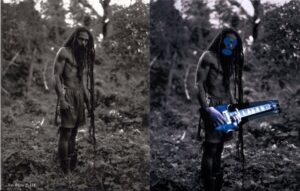Picasso said: “good artists borrow, great artists steal.” Or maybe he took the phrase from someone else. In any case, the US Supreme Court has again confounded the legal world by upending expectations, if not years of precedent – though this time in the intellectual property arena. Warhol v. Goldsmith[1] also has the potential to upend long-held practices in the art world. One of the more surprising aspects of this case is that the decision pitted traditional liberal allies Justice Sotomayor (who wrote the majority opinion) against Justice Kagan (in dissent).
Even for this very fractious Court, Kagan’s minority opinion was especially cutting: “It is not just that the majority does not realize how much Warhol added; it is that the majority does not care…In adopting that posture of indifference, the majority does something novel (though in law, unlike in art, it is rarely a good thing to be transformative).” She continued: “… today’s decision—all the majority’s protestations notwithstanding—leaves our first-factor [for fair use] inquiry in shambles…the majority plants itself firmly in the ‘I could paint that’s school of art criticism.’” Take that.
The decision has been both decried as an assault on the future of art and hailed as a major vindication for photographers.
So how did we get here?
The leading case on what constitutes transformation in the context of art and photography involved Prince.[2] In this case, the artist was Richard Prince, not the musician Prince. The New York Second Circuit reversed a lower court ruling and found that Richard Prince’s secondary works–he added elements and enlarged photographs of Rastafarians by Patrick Cariou–did not infringe those of the photographer. The Warhol Foundation, presciently, filed an amicus brief defending appropriation art.

Original photograph by Patrick Cariou (left); Work by Richard Prince (right)
Per usual for SCOTUS cases, there was a long and winding road to the top court. Lynn Goldsmith is a photographer well-known for her images of musicians. Her 1981 black-and-white photo of Prince was used as the source for colored prints by Warhol, who in turn was commissioned to create a single work for a 1984 article about the musician in Vanity Fair magazine.[3] Goldsmith received a small licensing fee for this use and was co-credited with Warhol in the magazine. Between 1984 and his death in 1987, Warhol created a total of 16 variations in his Prince series.[4]
Following the death of Prince, 32 years later, Vanity Fair again turned to Warhol, and used “Orange Prince” on the magazine’s cover for a commemorative issue titled: “The Genius of Prince.” This time Goldsmith received no credit or fee; only Warhol (via the Andy Warhol Foundation, which held copyrights) was mentioned and paid.

The Eyes have it–Original photograph by Lynn Goldsmith (left); Work by Andy Warhol (right)
After hearing from Goldsmith’s lawyers (the photographer was not pleased), the Foundation moved in the SDNY to have the court clarify the matter of copyright. Goldsmith counter-sued, claiming copyright infringement.
In litigation, the case ping-ponged from the district court (ruling for Warhol) to the appeals court (ruling for Goldsmith), then finally went to the Supreme Court. The central issue was fair use, that is, whether Warhol had sufficiently ‘transformed’ the original image. Clearly, Warhol made numerous changes to the original, in scale, color, medium. The Warhol Foundation also argued that there was a change (or transformation) in the underlying meaning–that the artist had transformed an image of a “vulnerable, uncomfortable person” into “an iconic, larger-than-life figure.” The Justices were unconvinced. The case turned on the issue of licensing, and focused on the purpose of the use being something commercial. For the Court, Justice Sotomayor opined:
… Goldsmith’s original photograph of Prince, and AWF’s copying use of that photograph in an image licensed to a special edition magazine devoted to Prince, share substantially the same purpose, and the use is of a commercial nature. AWF has offered no other persuasive justification for its unauthorized use of the photograph.
Will the decision stifle and chill creativity as critics of the decision claim? Or can it be read narrowly to apply only to licensing situations where the ‘copy’ is being substituted commercially for the original? The answer is a definitive…maybe.[5] A nuanced approach based on the facts of each case is best.
What is certain is that creators will keep creating, with one eye on the canvas (or computer screen), and the other on their lawyer’s contact information.[6]
Related Services
About the Author:

Paul Bain is a Partner in Dickinson Wright’s Toronto office, focusing his practice on intellectual property and art law. He can be reached at PBain@dickinsonwright.com or 416-646-8364, and his biography can be viewed here.
Related Attorneys:
 John L. Krieger is a Member in Dickinson Wright’s Las Vegas office. He can be reached at 702.550.4439 or JKrieger@dickinsonwright.com.
John L. Krieger is a Member in Dickinson Wright’s Las Vegas office. He can be reached at 702.550.4439 or JKrieger@dickinsonwright.com.
[1] https://www.supremecourt.gov/opinions/22pdf/21-869_87ad.pdf
[2] Cariou v. Prince, 714 F.3d 694 (2d Cir. 2013)
[3] 1984 saw the release of the record Purple Rain, which helped cement Prince as an international superstar
[4] Including the original (or perhaps the better term is ‘first’) ‘Orange Prince’
[5] As one headline in the New York Times put it: “Ruling Against Warhol Shouldn’t Hurt Artists. But It Might.” https://www.nytimes.com/2023/05/19/arts/design/warhol-prince-supreme-court-copyright.html
[6] We may be reached at https://www.dickinson-wright.com/error?aspxerrorpath=/~/vcf/Paul_E_Bain.vcf
